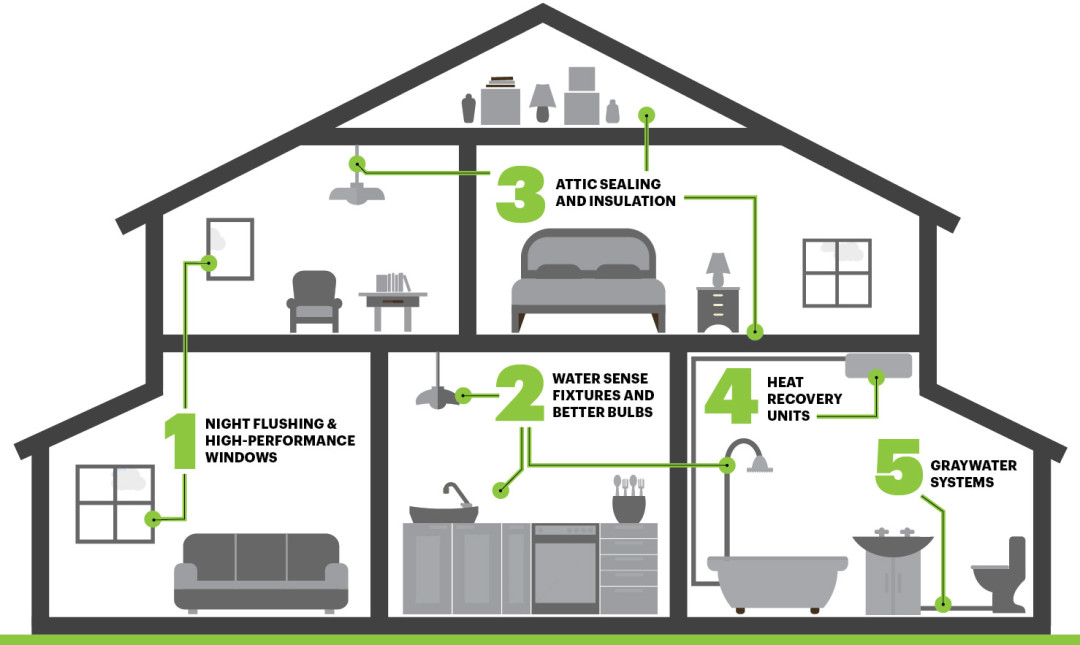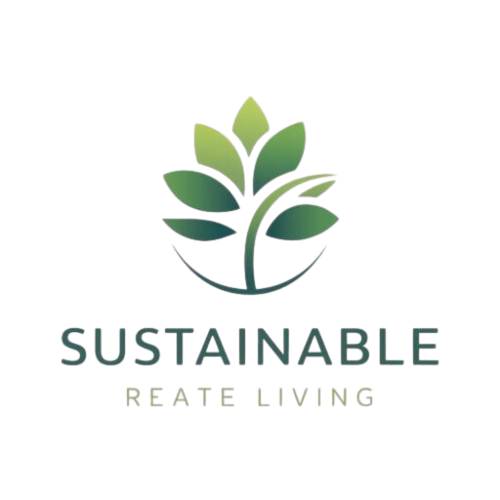Being eco-friendly at home means making choices that help our planet. Small changes can lead to big differences in protecting nature.
Today, more people want to live sustainably. Home is the best place to start. You can reduce waste, save energy, and conserve water with simple actions. From using reusable bags to switching off lights, every step matters. Not only does being eco-friendly help the environment, but it can also save you money.
This guide will show you easy ways to make your home greener. Whether you are just starting or looking to improve your current habits, you’ll find useful tips here. Let’s explore how to create a more eco-friendly home together.

Introduction To Eco-friendly Living
Eco-friendly living means making choices that help the planet. It involves small changes in daily life. These changes can lead to a healthier environment. Everyone can contribute to this cause.
Living eco-friendly is not just a trend. It is a necessity for our future. Simple actions can lead to big impacts. Understanding this can inspire us to act.
The Importance Of Going Green
Going green helps reduce pollution. It protects natural resources. Clean air and water are essential for life. By choosing eco-friendly options, we improve our health.
Green living promotes sustainability. It ensures that future generations can enjoy a healthy planet. Every small effort counts. It creates a ripple effect in the community.
Benefits For The Planet And Your Wallet
Being eco-friendly saves money. Energy-efficient appliances lower utility bills. Reducing waste cuts down on costs. Simple actions like recycling can save cash.
Eco-friendly choices benefit the planet. Less waste means less landfill. It helps reduce greenhouse gases. A cleaner environment leads to better health for all.
Energy Efficiency At Home
Saving energy at home helps the planet. Simple changes can make a big difference. Use energy-efficient appliances, turn off lights, and seal windows to keep your home eco-friendly. Every small step counts toward a greener future.
Energy efficiency at home is more than just a trend; it’s a crucial step towards reducing your environmental footprint. Every little change you make can add up, leading to significant energy savings and a healthier planet. Adopting energy-efficient practices not only benefits the environment but also helps you save money on utility bills. Let’s look at some practical ways to enhance energy efficiency in your home.
Switching To Led Bulbs
Switching to LED bulbs is one of the simplest changes you can make. These bulbs use up to 80% less energy than traditional incandescent bulbs. Not only do they last longer, but they also emit less heat. This means you save on cooling costs in warmer months. Consider replacing your most-used bulbs first. You’ll notice the difference in your energy bill, and the change is easy to implement. Have you ever thought about how many lights are left on in your home? Making a conscious effort to switch off lights when leaving a room can further enhance your savings.
Smart Thermostats For Climate Control
Smart thermostats provide an excellent way to manage your home’s climate efficiently. They learn your schedule and adjust the temperature accordingly, ensuring comfort while saving energy. For example, you can program the thermostat to lower the heat when you’re away or asleep. This simple adjustment can cut your heating costs significantly. Many smart thermostats offer features like remote access via your smartphone. You can adjust settings on the go, ensuring you never waste energy when you don’t need to. Ask yourself: how often do you forget to adjust the thermostat before leaving home? With a smart thermostat, those worries are a thing of the past. By making these small changes, you’ll notice not just a reduction in energy consumption, but also a positive shift in your daily habits. How will you start your journey towards a more energy-efficient home?
Water Conservation Strategies
Saving water at home is simple and important. Use a broom instead of a hose to clean driveways. Fix leaky faucets to prevent waste. Collect rainwater for plants. Each small step helps the planet.
Water conservation is a crucial aspect of living an eco-friendly lifestyle at home. Every drop counts, and small changes can lead to significant savings. Implementing effective water conservation strategies not only helps the environment but also reduces your utility bills.
Low-flow Fixtures
Switching to low-flow fixtures is one of the simplest ways to conserve water. These fixtures, including showerheads, faucets, and toilets, use significantly less water without sacrificing performance. – Showerheads: Look for showerheads that use 2.0 gallons per minute (gpm) or less. This can save you thousands of gallons annually. – Faucets: Install aerators that limit flow to 1.5 gpm. This small addition can cut your water usage in half. – Toilets: Consider low-flow toilets that use 1.6 gallons per flush. Some models even use as little as 1.28 gallons. Have you noticed how much water you waste during long showers? I started timing my showers and found I could cut them down by just a few minutes. The savings added up quickly, both in water usage and in my water bill.
Rainwater Harvesting
Rainwater harvesting is an effective strategy to reduce your reliance on municipal water. By collecting rainwater from your roof, you can use it for irrigation, washing your car, or flushing toilets. – Setting Up a System: Invest in a rain barrel that collects water from your gutters. A barrel can easily hold 50-100 gallons of water. – Using the Water: Utilize this water for your garden or outdoor plants. They thrive on rainwater, which is often better for them than treated water. – Maintenance: Regularly check your system to ensure it’s clean and functioning properly. This prevents mosquitoes and other pests from breeding. Have you ever tasted rainwater? It’s pure and fresh, making it perfect for your plants. Plus, it feels great to know you’re using a natural resource instead of tapping into your water supply. Implementing these water conservation strategies can make a huge difference in your home. Are you ready to make these changes and see the impact for yourself?
Reducing Waste And Recycling
Reducing waste and recycling are simple steps to make your home more eco-friendly. Start by separating recyclables from trash. Use reusable bags and containers to cut down on single-use items. Small changes can lead to a cleaner planet.
Reducing waste and recycling are essential steps toward a greener home. Small changes in your daily habits can lead to significant impacts on the environment. Let’s look at practical ways to manage waste effectively and embrace recycling in your home.
Composting Kitchen Scraps
Composting is an easy way to reduce kitchen waste. Instead of tossing vegetable peels and fruit scraps into the trash, create a compost bin. Start with a simple setup: a container in your kitchen for collecting scraps. What to compost: – Fruit and vegetable peels – Coffee grounds – Eggshells – Yard waste By composting, you enrich your soil and decrease the amount of waste going to landfills. Your garden will thank you with healthier plants! Have you tried composting? It’s surprisingly satisfying to see waste transform into nutrient-rich soil.
Sorting Recyclables Properly
Proper recycling starts with knowing what can be recycled. Different materials have specific guidelines, so take a moment to learn them. Set up a dedicated recycling station in your home. Use clear bins labeled for paper, plastics, metals, and glass. Things to remember: – Rinse out containers before recycling – Remove caps from bottles – Flatten cardboard boxes Sorting recyclables not only keeps your space organized but also ensures your efforts truly benefit the planet. You might be surprised by how much waste you can divert from the landfill. Have you ever checked what your local recycling program accepts? Staying informed helps you make better choices every day.
Sustainable Food Choices
Choosing sustainable food helps the planet. Simple swaps, like buying local produce, make a big difference. Reducing food waste is key. Composting scraps and planning meals can help. Small changes at home lead to a healthier environment.
Sustainable food choices play a crucial role in reducing your carbon footprint and promoting a healthier planet. Making conscious decisions about what you eat can significantly impact the environment. Here are two key areas to focus on: buying local and organic foods, and adopting a plant-based diet.
Buying Local And Organic
Purchasing local and organic foods is a simple yet effective way to support sustainability. Local produce travels shorter distances, which means less fuel consumption and lower greenhouse gas emissions. Plus, you often get fresher fruits and vegetables that taste better. When you choose organic products, you help reduce the use of harmful pesticides and fertilizers. These chemicals can pollute water sources and harm wildlife. Organic farming practices also promote biodiversity, which is vital for a healthy ecosystem. Consider visiting your local farmers’ market. You can find seasonal fruits and vegetables while supporting local farmers. This approach not only reduces your environmental impact but also strengthens your community ties.
Plant-based Diets And The Environment
Adopting a plant-based diet can have a profound effect on the environment. Meat production is resource-intensive, requiring large amounts of water and land. By reducing your meat consumption, you can conserve these precious resources. Many people assume that plant-based diets are restrictive. However, the variety of delicious plant-based options available today is astounding. You can enjoy hearty meals made from beans, lentils, grains, and vegetables without sacrificing flavor. Have you ever tried a meatless Monday? It’s a great way to start incorporating more plant-based meals into your routine. Not only will you help the environment, but you’ll also discover new recipes and flavors that might surprise you. Making sustainable food choices is an empowering step towards a healthier planet. What changes will you make today to contribute to a more sustainable future?
Eco-friendly Cleaning And Maintenance
Cleaning and maintaining your home shouldn’t come at the expense of the environment. Eco-friendly cleaning and maintenance practices not only keep your space fresh and tidy but also contribute to a healthier planet. Simple changes can make a significant impact, and they often save you money in the long run.
Natural Cleaning Products
Switching to natural cleaning products can drastically reduce the number of harmful chemicals in your home. Many store-bought cleaners contain ingredients that can irritate your skin and lungs. Instead, consider making your own cleaners using simple ingredients like vinegar, baking soda, and essential oils.
- All-Purpose Cleaner: Mix equal parts of water and vinegar in a spray bottle. Add a few drops of your favorite essential oil for a pleasant scent.
- Scrub: Create a paste with baking soda and a little water. This is excellent for scrubbing tough stains.
- Glass Cleaner: Combine one cup of water, one cup of vinegar, and a tablespoon of dish soap for streak-free shine.
Using these natural products not only cleans your home but also avoids contributing to plastic waste from disposable bottles. Think about how much less you could spend on cleaning supplies each month. You might find that using simple, natural ingredients makes your cleaning routine more enjoyable.
Maintaining Appliances For Efficiency
Regular maintenance of your appliances can lead to significant energy savings. When appliances run efficiently, they consume less electricity and water. This not only benefits your wallet but also reduces your carbon footprint.
- Check and clean your refrigerator coils every six months to keep it running efficiently.
- Run your dishwasher and washing machine with full loads only to maximize water use.
- Consider replacing old appliances with energy-efficient models that consume less energy.
Have you ever checked the seals on your refrigerator? A small crack can lead to energy waste and increased bills. By taking a few minutes each month to maintain your appliances, you can extend their lifespan and save money.
Embracing eco-friendly cleaning and maintenance practices not only creates a healthier living space but also fosters a sense of responsibility towards the environment. Small changes lead to big differences, and your choices matter.
Green Home Decor And Renovations
Eco-friendly home decor and renovations focus on using sustainable materials. Simple changes can make your home greener. Choose energy-efficient appliances and natural fibers for furniture. Small steps lead to a healthier environment.
Creating a green home decor and renovation plan can significantly reduce your environmental impact. Small changes can lead to a big difference in how sustainable your living space is. It’s not just about style; it’s about making choices that are kind to the planet.
Using Recycled Materials
Choosing recycled materials for your home decor and renovations can be both stylish and eco-friendly. You can find beautiful reclaimed wood for furniture, flooring, and even wall accents. This not only cuts down on waste but also adds character to your home. Think about using recycled metal for fixtures or decor items. You’ll be surprised at the unique pieces you can create. Search for local shops or online marketplaces that specialize in recycled materials. You might discover treasures that tell a story and have a history. Using recycled materials can also save you money. It’s a win-win situation for your wallet and the environment.
Eco-friendly Paints And Finishes
Choosing eco-friendly paints and finishes is a game changer for your home. Traditional paints often contain harmful chemicals that can affect air quality. Look for paints labeled as low-VOC or zero-VOC. These options are safer for you and your family. You can also explore natural finishes like oils and waxes that come from sustainable sources. They not only protect your surfaces but also give them a beautiful, natural look. Consider trying out different colors and textures to find what resonates with you. Have you ever thought about how a fresh coat of paint can change your mood? Make your home a healthier place by selecting finishes that are safe for your environment. It’s a small step that leads to a big impact. Your choices matter. Which eco-friendly options will you choose for your next home project?
Investing In Renewable Energy
Investing in renewable energy can make your home more eco-friendly. Using solar panels or wind turbines reduces your carbon footprint. Simple steps like these help protect the environment and save money on energy bills.
Investing in renewable energy not only benefits the environment but can also lead to significant savings on your utility bills. By harnessing natural resources, you can reduce your carbon footprint and create a more sustainable home. Let’s dive into two popular renewable energy options: solar panels and wind energy.
Solar Panels For Home Use
Solar panels are a fantastic way to generate clean energy at home. They convert sunlight into electricity, which can power your appliances, lights, and even your heating systems. Many homeowners report a substantial decrease in their energy bills after installing solar panels. In some cases, the savings can cover the initial investment within a few years. Consider your roof’s orientation and shading. A south-facing roof typically receives the most sunlight. If your roof isn’t ideal, ground-mounted panels or community solar programs might be worth exploring. To make the switch easier, numerous financing options exist. Some states even offer tax incentives or rebates for solar panel installation. Research what’s available in your area; it could make a significant difference.
Exploring Wind Energy Options
Wind energy is another renewable source that can complement your energy needs. Small wind turbines can be installed on your property to harness wind power, especially in areas with consistent winds. Think about the space you have available. A small turbine requires a yard or land with enough clearance from trees and buildings. This investment can be particularly rewarding in rural areas where wind speeds are higher. Many people are surprised by how much energy a wind turbine can generate. Depending on the size and wind conditions, it can power a significant portion of your home. Evaluate local regulations and zoning laws before proceeding. Some areas have restrictions on turbine height or installation, so it’s essential to check beforehand. Have you considered how investing in renewable energy can change your lifestyle? Not only can it lower your bills, but it can also contribute to a cleaner planet for future generations.
The Role Of Technology In Eco-friendly Living
Technology plays a key role in eco-friendly living at home. Smart devices help save energy and reduce waste. Simple tools, like energy-efficient appliances, make it easier to live sustainably. Embracing these innovations supports a greener lifestyle while benefiting the environment.
Technology plays a crucial role in making your home more eco-friendly. It not only simplifies energy conservation but also provides insights into your consumption patterns. Embracing modern solutions can lead to significant savings on your bills while reducing your carbon footprint.
Home Automation For Energy Saving
Smart home devices are game-changers for energy efficiency. You can program your thermostat to adjust temperatures based on your schedule. This means you’re not wasting energy heating or cooling an empty house. Smart lighting systems allow you to control lights remotely. You can turn them off if you forget when leaving home. Motion sensors can also help, ensuring lights only turn on when someone is in the room. Consider using smart plugs to control appliances. You can set timers to turn off devices that consume power when not in use. This small step can lead to big savings over time.
Apps And Tools For Monitoring Consumption
Monitoring your energy usage has never been easier with today’s technology. Apps like EnergyHub or Sense provide real-time insights into your consumption. You can track which appliances use the most energy and adjust your habits accordingly. Have you ever wondered how much power your refrigerator uses? These tools can break down your consumption, helping you identify energy hogs. You might be surprised at how simple adjustments can lead to significant savings. Many utility companies offer apps that track your energy usage as well. You can receive alerts when you’re nearing your usage limits. This proactive approach can encourage you to make more eco-friendly choices at home. Incorporating technology into your eco-friendly lifestyle can be both empowering and rewarding. With smart devices and monitoring tools, you can make informed decisions that benefit the planet and your wallet. What steps will you take today to enhance your home’s energy efficiency?

Community Involvement And Education
Being eco-friendly is not just an individual effort. It thrives on community involvement. Working together with others boosts our impact. Sharing knowledge strengthens our efforts. Together, we can make a bigger difference.
Engaging with your community can lead to new ideas. It connects you with like-minded individuals. Education spreads awareness about sustainability. This helps everyone understand why eco-friendly choices matter.
Joining Local Green Initiatives
Many communities have green initiatives. These programs focus on sustainability. You can find local clean-up events, tree planting days, or recycling drives. Joining these activities builds a sense of belonging. You meet people who care about the same issues.
Participating in local initiatives shows your commitment. It also inspires others to join. Spread the word about upcoming events. Encourage friends and family to take part. Together, small actions can lead to significant change.
Educating Others On Sustainability
Education is key to fostering eco-friendly habits. Share what you learn about sustainability. Host workshops or informal gatherings to discuss eco-friendly practices. Simple topics like composting or energy saving can spark interest.
Use social media to share tips and resources. Create informative posts about recycling, reducing waste, or conserving water. The more people know, the more they can act. Start conversations and engage your community.
Encourage schools to include sustainability in their programs. Support projects that promote environmental awareness. Your efforts can lead to a more informed community. Together, we can create a brighter, greener future.
Conclusion: The Journey To A Green Home
Transitioning your home into an eco-friendly space is a rewarding journey, one that benefits both the planet and your lifestyle. Every small decision you make contributes to a larger impact. Embracing sustainable practices at home can seem overwhelming, but remember, every step counts.
Small Steps Lead To Big Changes
Start with simple actions. Switch to LED bulbs to reduce energy consumption. You’ll notice a difference in your electricity bill and your carbon footprint.
Consider creating a compost bin. Instead of tossing food scraps in the trash, recycle them into nutrient-rich soil for your garden. This not only cuts down on waste but also enriches your plants.
- Use reusable shopping bags to cut down on plastic waste.
- Opt for glass containers instead of plastic for food storage.
- Start a water-saving routine, such as shorter showers.
Each small step you take builds momentum. Over time, these practices become habits, and you’ll notice significant changes in your home and lifestyle.
Continual Learning And Improvement
Stay curious about new eco-friendly practices. Read articles, attend workshops, or join local community groups focused on sustainability. Engaging with others can spark fresh ideas.
Evaluate your progress regularly. Ask yourself, what worked well? What can you improve? Adaptability is key in this journey.
Consider tracking your efforts. A simple journal can help you reflect on what you’ve learned and the changes you’ve made. Seeing your progress can motivate you to keep going.
Remember, becoming eco-friendly is not a sprint; it’s a marathon. The more you learn, the more effective your actions will be. Are you ready to take the next step towards a greener home?

Frequently Asked Questions
How Can I Make My House More Eco-friendly?
To make your house more eco-friendly, use energy-efficient appliances and LED lighting. Install solar panels for renewable energy. Choose sustainable materials for renovations. Practice water conservation with low-flow fixtures. Implement recycling and composting systems to reduce waste. Maintain your garden with native plants to support local wildlife.
What Does A House Need To Be Eco-friendly?
An eco-friendly house needs energy-efficient appliances, proper insulation, sustainable materials, and renewable energy sources. Incorporating water-saving fixtures and efficient waste management also enhances sustainability. Using native plants in landscaping can further reduce environmental impact. Prioritizing these elements creates a healthier living space and minimizes ecological footprints.
How To Be 100% Eco-friendly?
Achieving 100% eco-friendliness involves adopting sustainable practices. Use renewable energy sources, reduce waste, and recycle materials. Choose eco-friendly products and support local, sustainable businesses. Minimize water usage and opt for plant-based diets. Educate others about environmental issues to promote collective action.
Every small step contributes to a healthier planet.
How To Be Green At Home?
To be green at home, reduce energy use by switching to LED bulbs. Recycle and compost waste to minimize landfill impact. Use eco-friendly cleaning products and avoid plastic. Choose sustainable materials for furniture and decor. Grow your own herbs or vegetables to promote healthy living and reduce carbon footprint.
Conclusion
Being eco-friendly at home is easier than you think. Small changes can make a big difference. Start by reducing waste and using less energy. Choose natural products for cleaning and personal care. Grow plants or start a small garden. These steps create a healthier home and planet.
Every action counts. Your efforts inspire others to join in. Together, we can protect our environment for future generations. Embrace these habits today. Your commitment matters. Make your home a greener place to live.
